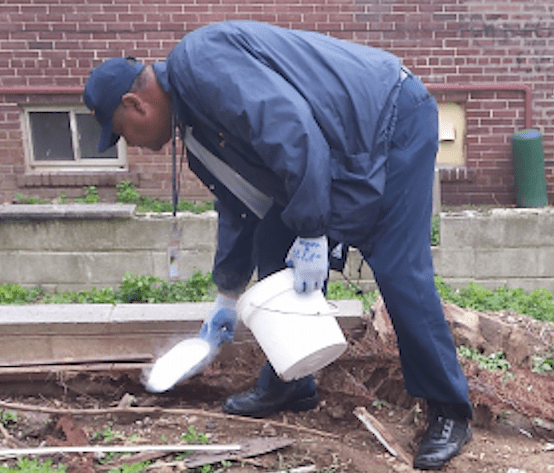Georgetown Rats Beware: The Iceman Cometh
By • October 10, 2018 0 974

The newest way to kill rats and other burrowing pests was introduced by Gerard Brown of the Department of Health’s rodent control division at the Oct. 1 meeting of Advisory Neighborhood Commission 2E: dry ice.
Yes, dry ice — that magical lump of material we refer to as ice but is actually a solidified form of carbon dioxide. When its vapors hit the air, they turn into thick, white, billowy, smoky-looking clouds. It’s frequently used for theatrical effects and in Halloween displays.
“Dry ice is noncorrosive, nontoxic and nonconductive, generally,” said Brown at the meeting, held at Georgetown Visitation School. “But in its not-very-toxic gas state, it can cause abnormally elevated carbon dioxide levels in the blood of an exposed organism, especially in confined locations. And that can cause them to suffocate and to die.”
Hence, the new campaign to apply (in other words, stuff) dry ice down and into known rat burrows, seal the burrow entrances completely and let the product do its thing.
It takes about two pounds of chipped dry ice or dry ice pellets scooped into a single rat burrow to be effective, according to Brown. And as rodent abatement methods go, dry ice is relatively humane and cheap: only 50 cents per burrow, per some estimates. It can be bought at most local grocery stores.
But because it’s much colder than regular ice — minus 109.3 degrees Fahrenheit — it can burn human skin or cause frostbite. Heavy insulated gloves or tongs should be used when handling dry ice, warned Brown. Other warnings re handling dry ice include never to mix it with any kind of liquid or put it in a tightly closed or sealed container (it may rupture the package or explode). Dry ice should only be worked with in open or well-ventilated areas, according to health department guidelines.
Leftover dry ice should be allowed to melt and evaporate at room temperature. Cats and dogs are unlikely to ingest it.
While the idea of killing rats where they live and breed is dramatic, the District is continuing to seek more efficient ways to dispose of the rats’ food supply: human- generated garbage.

